
Browse an alphabetical list of photographs. These historical images portray people, places, and events before, during, and after World War II and the Holocaust.
<< Previous | Displaying results 2391-2400 of 2641 for "Photo" | Next >>
Thracian Jews crowd the upper deck of the Karađorđe, a ship used for deportation, as it leaves the port of Lom. They were transported by ship along the Danube River to Vienna and then by rail to the Treblinka killing center in occupied Poland. Lom, Bulgaria, March 1943.
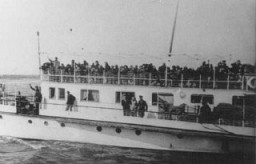
Thracian Jews crowded into an interior room of the Karađorđe, used as a deportation ship, just before it left the Danube River port of Lom. From Lom they were loaded onto four Bulgarian ships and taken to Vienna, where they were put on trains bound for the Treblinka killing center in occupied Poland. Lom, Bulgaria, March 1943.
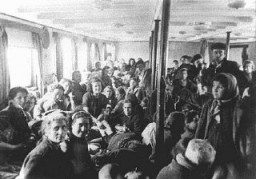
Three generations of a Jewish family pose for a group photograph. Vilna, 1938-39. The photo was taken during daughter Mina's visit from Montreal. Among those pictured are Mina (Katz) Herman and her daughter, Audrey (front row, second from the right), Itzik Katz, Mina's brother (standing at the far left) and Malka Katz, Mina's mother (front row, center).
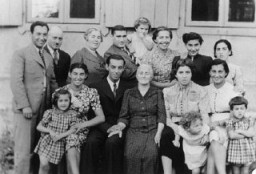
Three German mayors view the corpse of a prisoner burned alive in a barn by the SS while on a death march from Rottleberode, a subcamp of Dora-Mittelbau. Gardelegen, Germany, April 18, 1945.
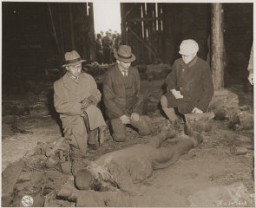
Three Jewish partisans in the Wyszkow Forest near Warsaw. Poland, between 1943–44.
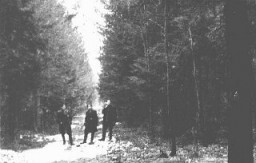
Three participants in the Treblinka uprising who escaped and survived the war. Photograph taken in Warsaw, Poland, 1945. Pictured from left to right are: Abraham Kolski, Lachman and Brenner. After participating in the Treblinka uprising, they escaped from the camp and found temporary refuge in the nearby forest. Afterwards they hid with a Christian family until liberation.
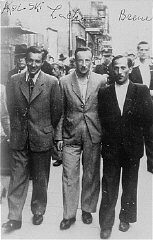
Three-year-old Thomas Buergenthal with his parents, Mundek and Gerda. Czechoslovakia, June 1937. With the end of World War II and collapse of the Nazi regime, survivors of the Holocaust faced the daunting task of rebuilding their lives. With little in the way of financial resources and few, if any, surviving family members, most eventually emigrated from Europe to start their lives again. Between 1945 and 1952, more than 80,000 Holocaust survivors immigrated to the United States. Thomas was one of them.
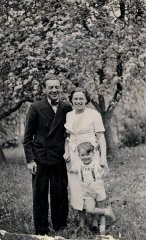
Three-year-old Thomas Buergenthal during a stay at a hotel in Czechoslovakia, 1937. With the end of World War II and collapse of the Nazi regime, survivors of the Holocaust faced the daunting task of rebuilding their lives. With little in the way of financial resources and few, if any, surviving family members, most eventually emigrated from Europe to start their lives again. Between 1945 and 1952, more than 80,000 Holocaust survivors immigrated to the United States. Thomas was one of them.
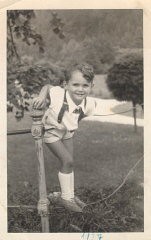
French policeman Théophile Larue, who warned his Jewish neighbors of an upcoming roundup.
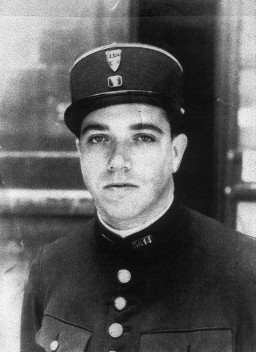
Standing room ticket for an opera performed on April 21, 1945, in the Theresienstadt ghetto.
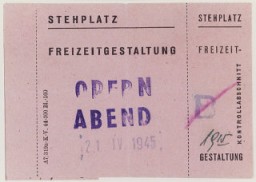
We would like to thank Crown Family Philanthropies, Abe and Ida Cooper Foundation, the Claims Conference, EVZ, and BMF for supporting the ongoing work to create content and resources for the Holocaust Encyclopedia. View the list of donor acknowledgement.